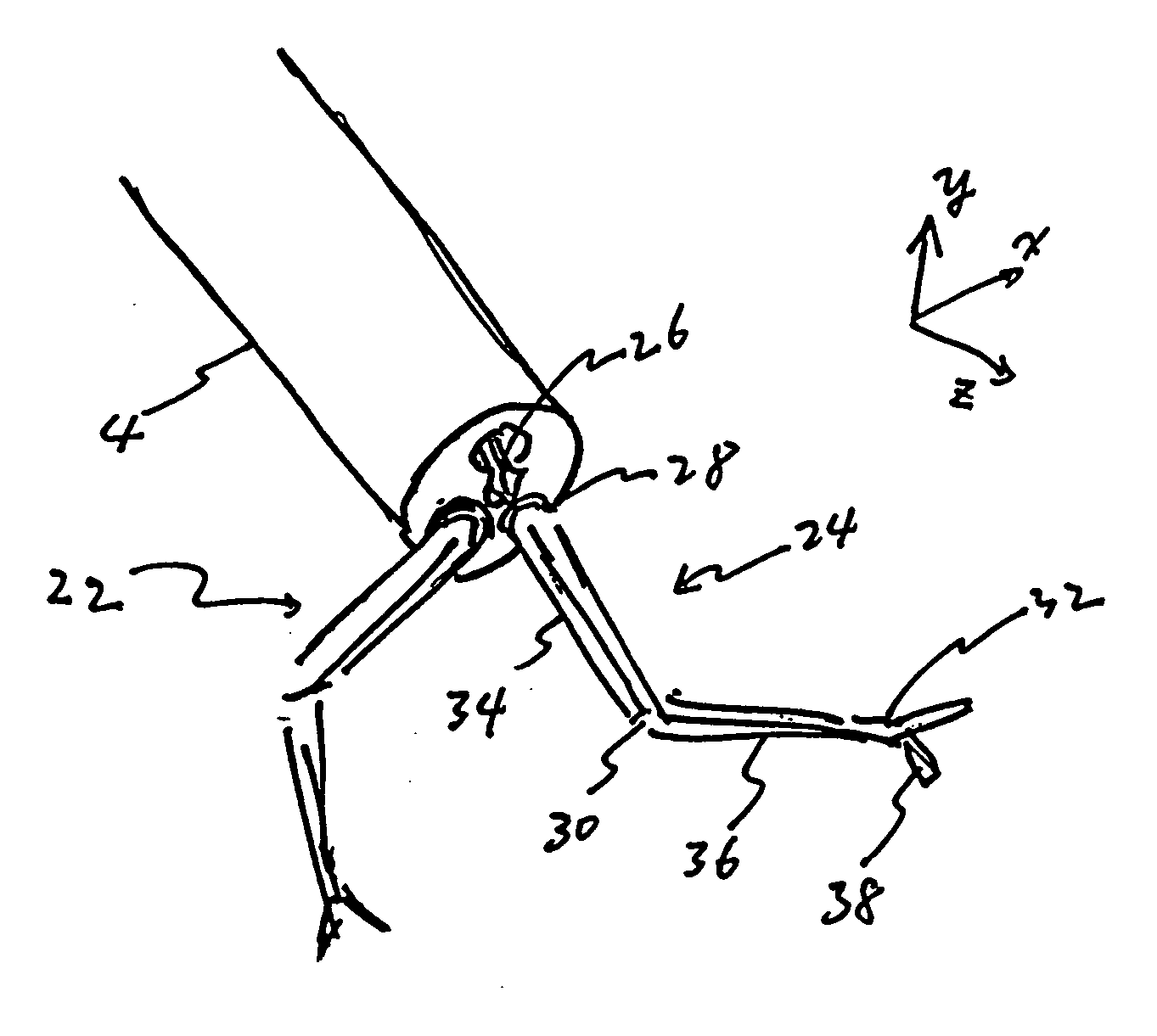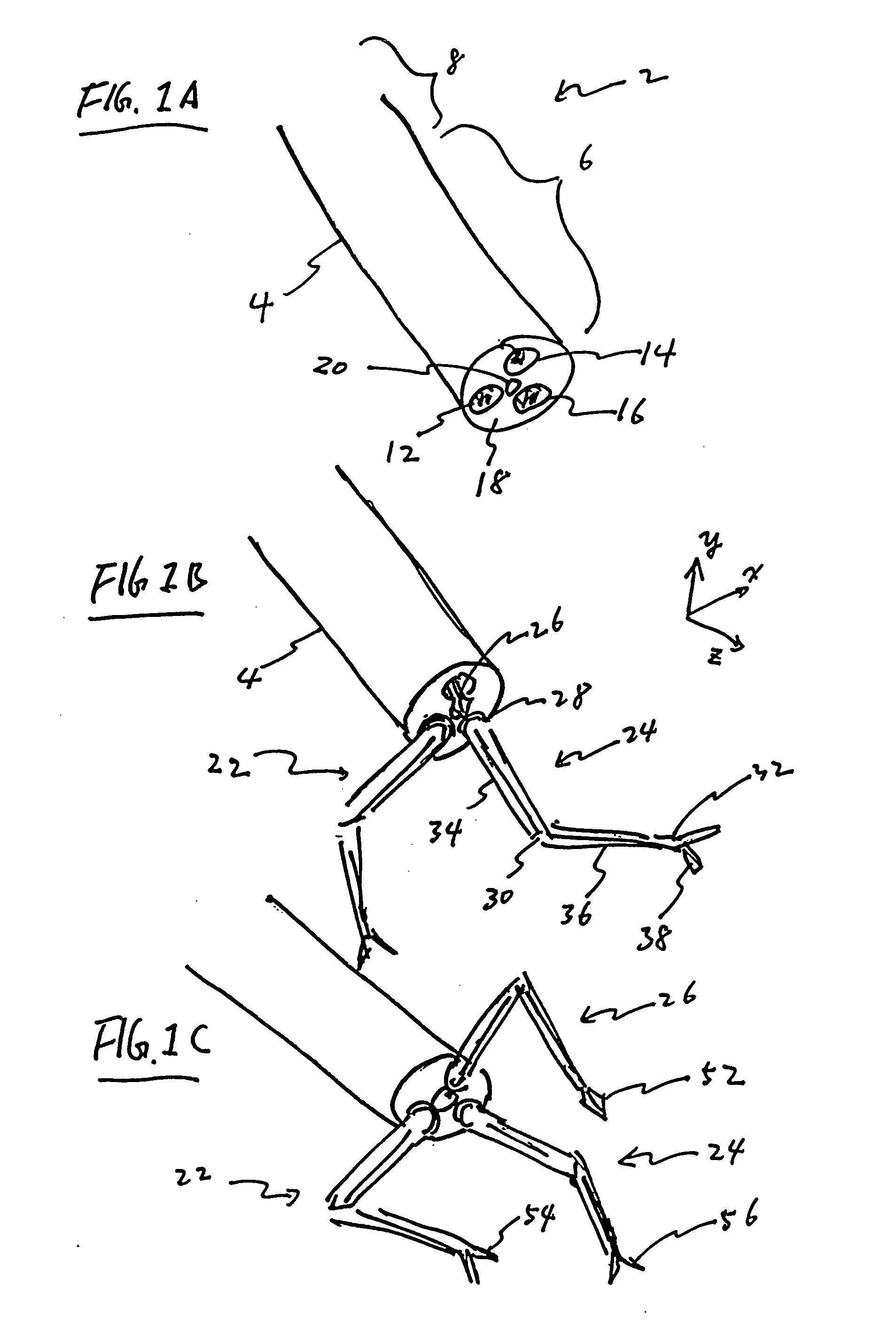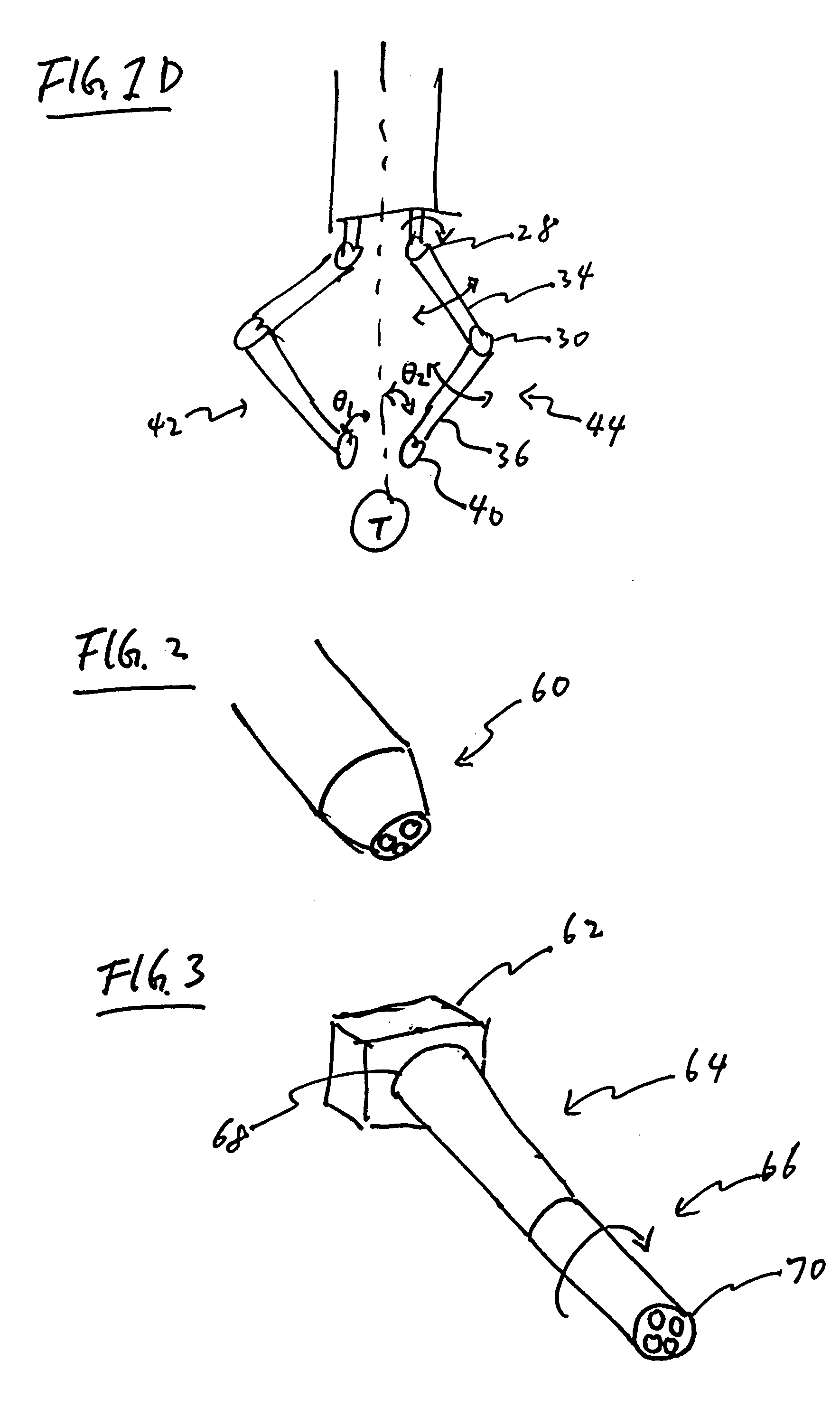Robotic surgical device
a robotic and surgical technology, applied in the field of robotic devices, can solve the problems of difficult hand-eye coordination, significant decrease in tactile perception, and the technique itself introduces other things, so as to reduce the time necessary, reduce the pre-surgical prep time, and minimize the trauma to the patient
- Summary
- Abstract
- Description
- Claims
- Application Information
AI Technical Summary
Benefits of technology
Problems solved by technology
Method used
Image
Examples
Embodiment Construction
[0044] Before describing the present invention, it is to be understood that unless otherwise indicated this invention need not be limited to a device for performing surgical procedures. Surgical procedures are used herein as examples. It is under stood that some variation of the invention may be applied to various tasks where it would be desirable to deploy multiple robotic arms inside a mammalian body through a single incision. For example, the device may be utilized to accomplish a diagnostic task, such as taking physical or chemical measurements, or extracting a tissue sample from inside the patient's body.
[0045] Laparoscopic surgeries, such as cholecystectomy, are used herein as example applications to illustrate the functionality of the different aspects of the invention disclosed herein. It will be understood that embodiments of the present invention may be applied in a variety of minimally invasive surgical procedures and need not be limited to laparoscopic surgery. For exam...
PUM
 Login to View More
Login to View More Abstract
Description
Claims
Application Information
 Login to View More
Login to View More - R&D
- Intellectual Property
- Life Sciences
- Materials
- Tech Scout
- Unparalleled Data Quality
- Higher Quality Content
- 60% Fewer Hallucinations
Browse by: Latest US Patents, China's latest patents, Technical Efficacy Thesaurus, Application Domain, Technology Topic, Popular Technical Reports.
© 2025 PatSnap. All rights reserved.Legal|Privacy policy|Modern Slavery Act Transparency Statement|Sitemap|About US| Contact US: help@patsnap.com



